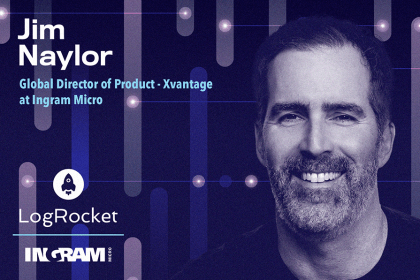Three years ago, I accidentally found myself in the position of product leadership.

My manager was going on maternity leave and would be away for six months, and she was delegating everything to me. From one day to another, I became the product leader of a tribe of three product teams and a manager to four product managers. I knew it would not be easy, but it didn’t feel like an impossible stretch.
Then the universe decided to increase the difficulty level of my first product leadership experience by a millionfold. Within six months, four major things happened:
What was supposed to be a healthy stretch suddenly became a complex situation that highlighted how completely unprepared I was for this role. And the impact of this unpreparedness was two-fold:
The thing is, my story of unintentionally finding myself in a leadership role is a pretty common one. There’s a good chunk of us product leaders out there who became leaders because there was a gap that needed to be filled, and we just happened to be there. We got asked to step up and it didn’t occur to us to say no. This, unfortunately, makes my story of ineffective and bad product leadership also a pretty common story.
That’s why I’m writing this article for all you potential product leaders and managers of potential product leaders. I hope to share the scope and challenges of a product leader, tips for aspiring product leaders to prepare for a leadership move, and tips for managers of aspiring product leaders to help your team prepare for the role.
That way, when you find yourself face-to-face with opportunities for leadership roles, you can confidently say yes because you know you already have the tools to execute on your new scope.
To prepare to be a product leader, we need to understand what exactly we’re preparing for.
What does being a product leader mean? What are the accountabilities of one? And what makes a good leader? Let’s jump in.
When we become product leaders, we’re no longer just defining objectives, strategies, and results for our product team. Instead, we’ll have to do it for the multiple product teams that make up the organization we’re leading.
We have to define an inspiring vision and mission for our organization, and design a strategy that will enable the organization to contribute to the company’s overall goals. The strategy should not only inspire and motivate our organization to action, but also empower them to make decisions moving forward.
Personally speaking, this is probably one of the most fun things a product manager can look forward to doing as a product leader.
On the flipside, there are a few things that a new product leader might find challenging with this scope:
When we become product leaders, it’s also our job to make sure that our organization is empowered to execute on the strategy by providing them with the correct environment to operate in. And how we do that is by:
So what are the challenges that a new product leader can run into when faced with this responsibility?
As product leaders, it’s also part of our responsibility to grow the next generation. We must use our experience and expertise to:
This means that we shape the culture of our organization — seeking accountability and raising the bar for everybody.
But this is not easy, especially for new product leaders. And we might find ourselves faced with the following challenges:
Some of the challenges we may face can impact us in a more personal way:
Now that we have a better understanding of what’s expected from the product leader, it’ll be easier to prepare for it! When the opportunity comes by, we no longer will be be caught by surprise.
Here are some things I can recommend you to start doing as soon as possible to start preparing for a product leadership role.
First and foremost, read your company’s financial reports! Know where your company stands in terms of revenue and expenses.
Next, stay on top of current news and trends. Immerse yourself in industry and technology news and white papers. Go to conferences! Read the publications! Zoom out!
Lastly, have a genuine curiosity for what other teams are building. Get to know what they do, what their challenges are, and how they’re contributing to the company goals.
Engage your engineering manager counterparts to understand their decision-making process on when they need to hire more people and why. This will help see their needs holistically and staff them correctly. Also, volunteer to be part of hiring committees or interview processes. This will help you really understand the personality and skills the teams are looking for.
Be curious and pay attention. Understand why new people are getting hired, why you got a salary increase (or didn’t), why new organizations are designed the way they are, and the criterias your leaders used to make those decisions. This will all help you be an effective leader when it’s your turn to be a part of these conversations.
This seems self-explanatory, but constantly ask for feedback from other people. Give feedback to them too. This is helpful not only to know what your improvement areas are, but to build a practice of sharing feedback openly and continuously with your peers and leaders. Read Radical Candor!
Further, volunteer to mentor more junior PMs within the team or within the company. You can also find mentoring and teaching opportunities outside of your company to connect with new faces and perspectives.
Finally, read relevant materials that teach you how to relate with other people, understand their motivations, and manage them. A few great examples are The Culture Map, Strong Product People, and Becoming a Manager.
Aspiring leaders can prepare themselves by getting a coach for themselves. A coach (or mentor that you look up to) can help you really focus on what’s most important, set clear boundaries, and detach yourself from difficult situations that might have a negative impact on your mental health.
If you’re reading this and you’re already in a leadership role and are managing aspiring product leaders, then it’s also your responsibility to make sure they’re ready. After all, not only is it part of our responsibility to grow the next generation product leaders, but we’re also expected to have a succession plan in the event that we have to vacate our roles for other opportunities.
Here are five things that I recommend you to start doing to prepare your current product managers to take up the product leadership mantle at any time.
The shift from individual contributor to leadership is not an easy one to make. It requires a change in mindset, new sets of tools, and a stretch in one’s ability to cope with different scenarios all happening at the same time.
When unprepared, this can be overwhelming and stressful. Lacking preparation can heavily impact an aspiring leader’s performance and motivation. And worst-case scenario, health as a constant barrage of stressors can lead to burnout.
But an aspiring leader doesn’t have to start their leadership journey like a headless chicken! There are a lot of things that can be done to help them understand the scope, build their toolkit, and stretch their mental and emotional muscles, such as exposure, delegation, and training. And to get them ready is a shared responsibility between the aspiring leader themselves, and us, as their leaders.
Featured image source: IconScout
LogRocket identifies friction points in the user experience so you can make informed decisions about product and design changes that must happen to hit your goals.
With LogRocket, you can understand the scope of the issues affecting your product and prioritize the changes that need to be made. LogRocket simplifies workflows by allowing Engineering, Product, UX, and Design teams to work from the same data as you, eliminating any confusion about what needs to be done.
Get your teams on the same page — try LogRocket today.

Red-teaming reveals how AI fails at scale. Learn to embed adversarial testing into your sprints before your product becomes a headline.

Cory Bishop talks about the role of human-centered design and empathy in Bubble’s no-code AI development product.

Learn how to reduce mobile friction, boost UX, and drive engagement with practical, data-driven strategies for product managers.

Jim Naylor shares he views documentation as a company’s IP and how his teams should use it as a source of truth.